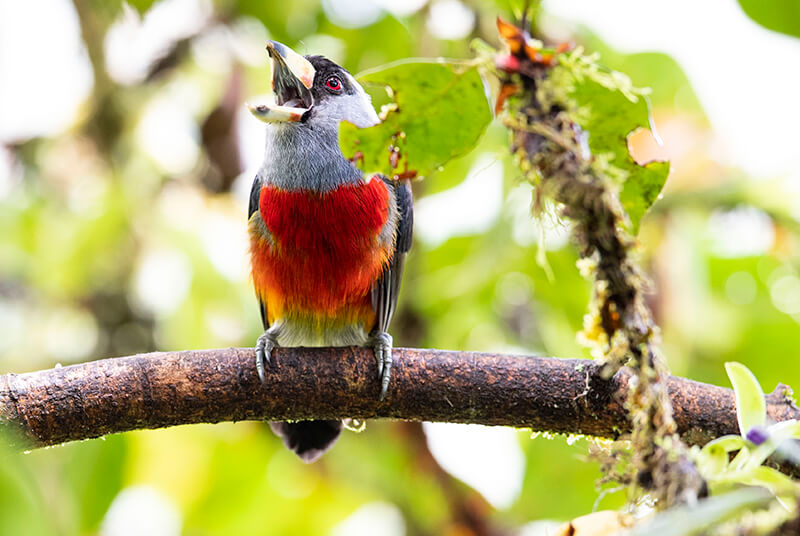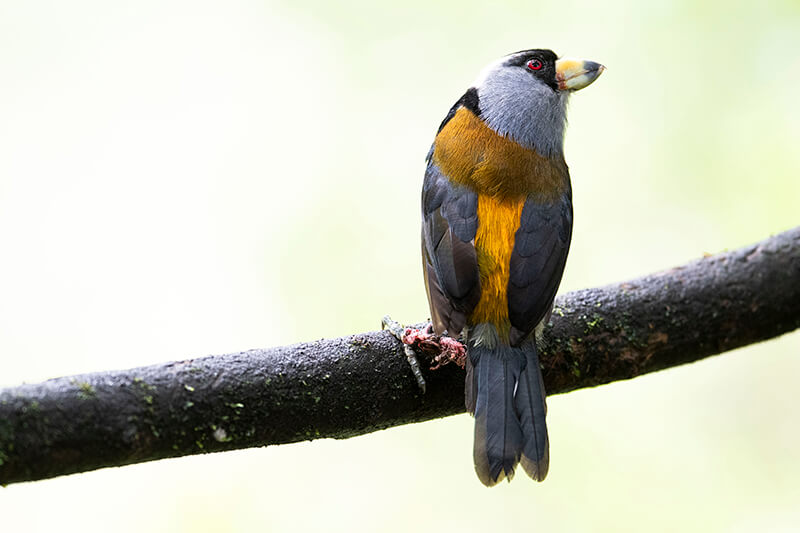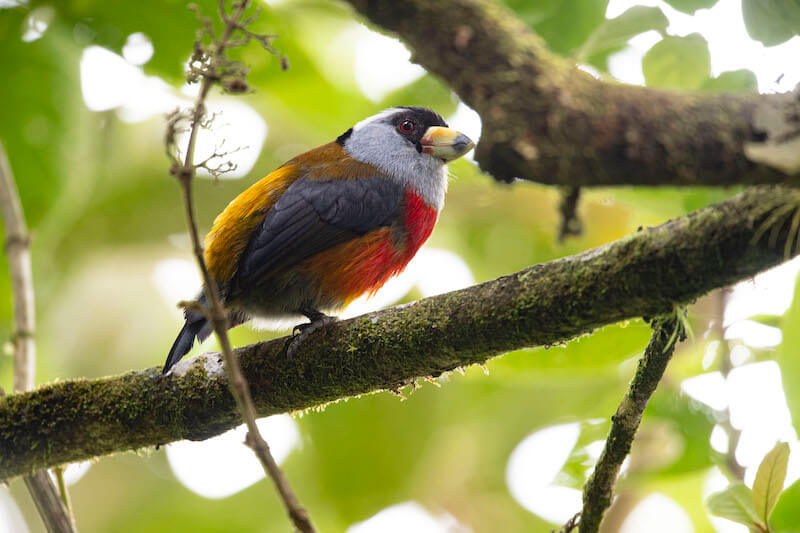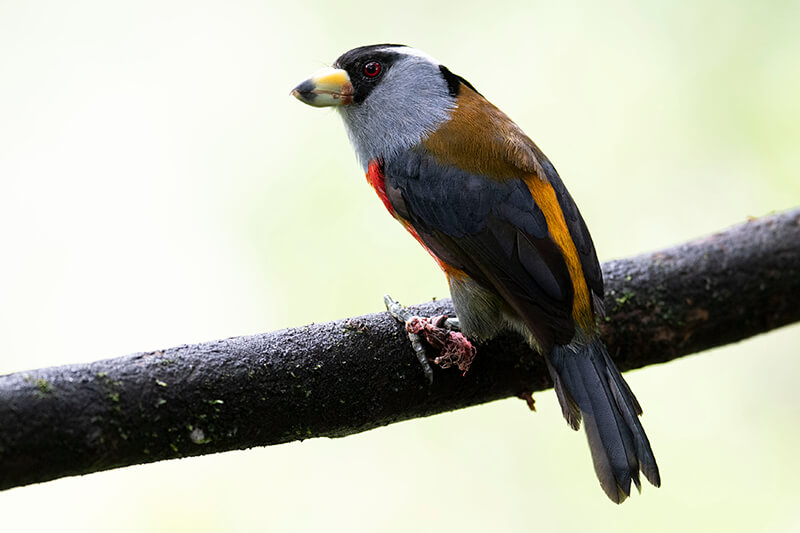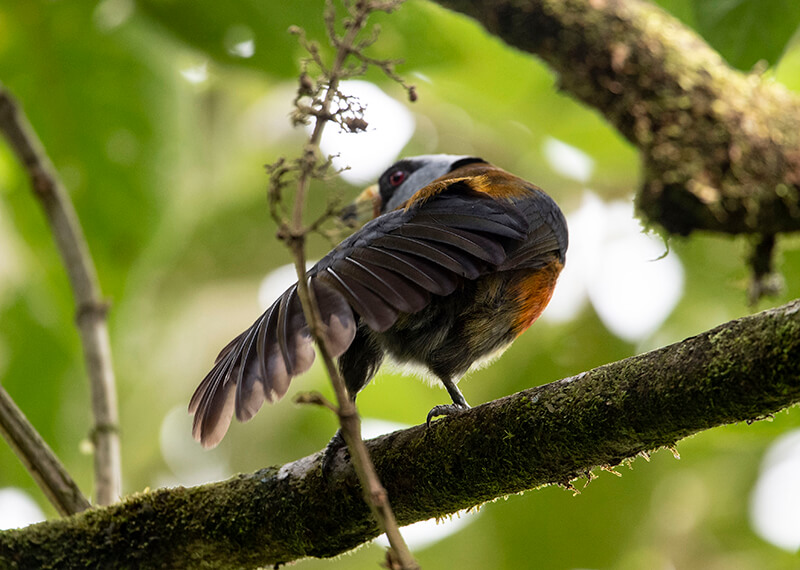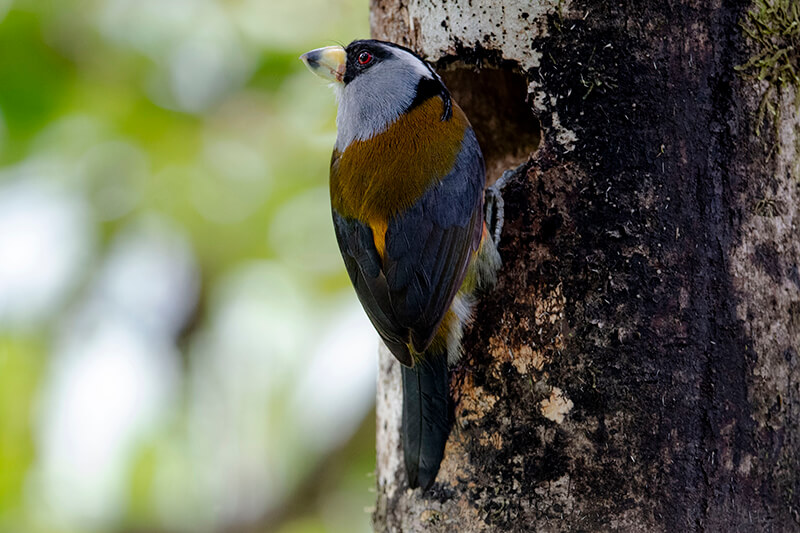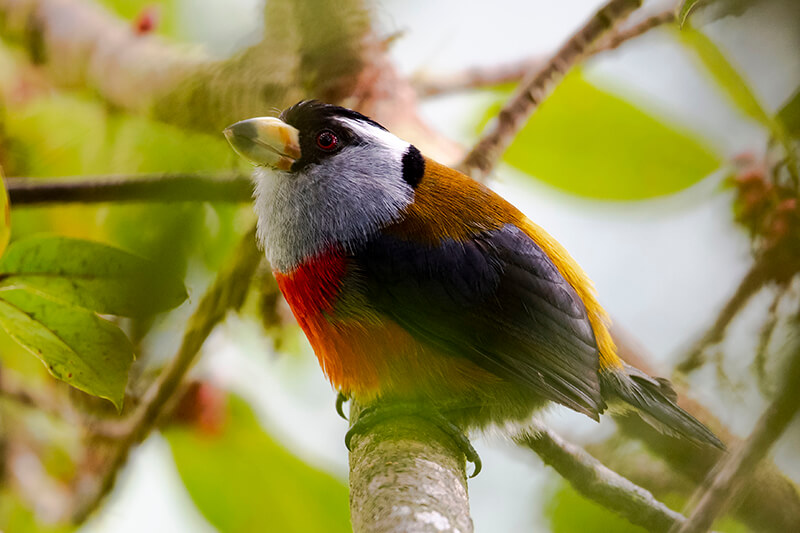Semnornis ramphastinus
The Toucan Barbet is closely related to the toucans. It measures 19-21 cm (7.5-8.3 in) in length and weighs from 80 to 115 g (2.8 – 4.1 oz). Likes wet montane forests and forest edges from 1000 to 2400 m (3300-7900 ft) of altitude. The bill is thick and strong. It is yellowish with a black band near the tip. Black under the bill and around the eyes, crown, and narrow nuchal collar. Black crown also known as a mask. Behind the ocular area there is a very thin white stripe. Iris is bright red. Upperparts are golden brown with a yellow rump. Both sides of the head, neck, throat, and chest are gray. The breast and center of belly stained bright red. Lower underparts yellowish green. Wing and tail are gray. No sexual dimorphism as both sexes are very similar. However, the plumage of the female is somewhat less bright. Frugivorous and also preys on insects and pierce flowers for nectar. Lives upper in the canopy. Nests are cavities carved by the male in decaying trees preferably of the family Laureaceae. Both sexes incubate the white-colored eggs for 15, but the male spends more time in the nest. Helpers sometimes aid in incubation and raising. Hatchlings fledge after 45 days. A near-threatened species because they are trapped for the cage-bird trade.
El Compás es un ave colorida de tamaño medio pesa entre los 80 y 120 g. Habita en alturas entre los 1400 a 2400 m en laderas de bosques húmedos. No tiene dimorfismo sexual ya que la hembra es muy parecida al macho mas el plumaje de la hembra es algo opaco. Plumaje negro en la corona y cara. Presenta también un delgado collar negro. Su iris es rojo y tiene una raya ocular blanca. Su dorso es de color café dorado que se extiende hasta la parte posterior donde se torna amarillo. Presenta un plumaje azul grisáceo en su garganta, partes laterales del cuello e inferior del pecho. Las alas y la cola son gris pizarra. La mitad de su vientre presenta plumaje rojo intenso y el resto de su parte inferior amarillo verdoso. De pico robusto amarillo por encima y de mandíbula inferior verde, y, con una banda negra apical. Barbas cortas. En parejas o grupos pequeños. Consume frutas e insectos y a veces perfora flores para obtener néctar. Con su fuerte pico contruye huecos en troncos de árboles viejos para utilizarlos de nido. Tienen preferencia por árboles de la familia Lauraceae para alimentarse y anidar. La tala de bosques hace que esta ave pierda su habitat. Ambos sexos y otros ayudantes incuban la postura de dos huevos blancos por 2 semanas. Las crías dejan el nido a los 45 días. En peligro de extinción.
MAT_0628
MAT_0722
MAT_0744
MAT_0323
MAT_0717
MAT_0630
MAT_0353
MAT_0412
MAT_0744
MAT_0379
MAT_0364
MAT_0366
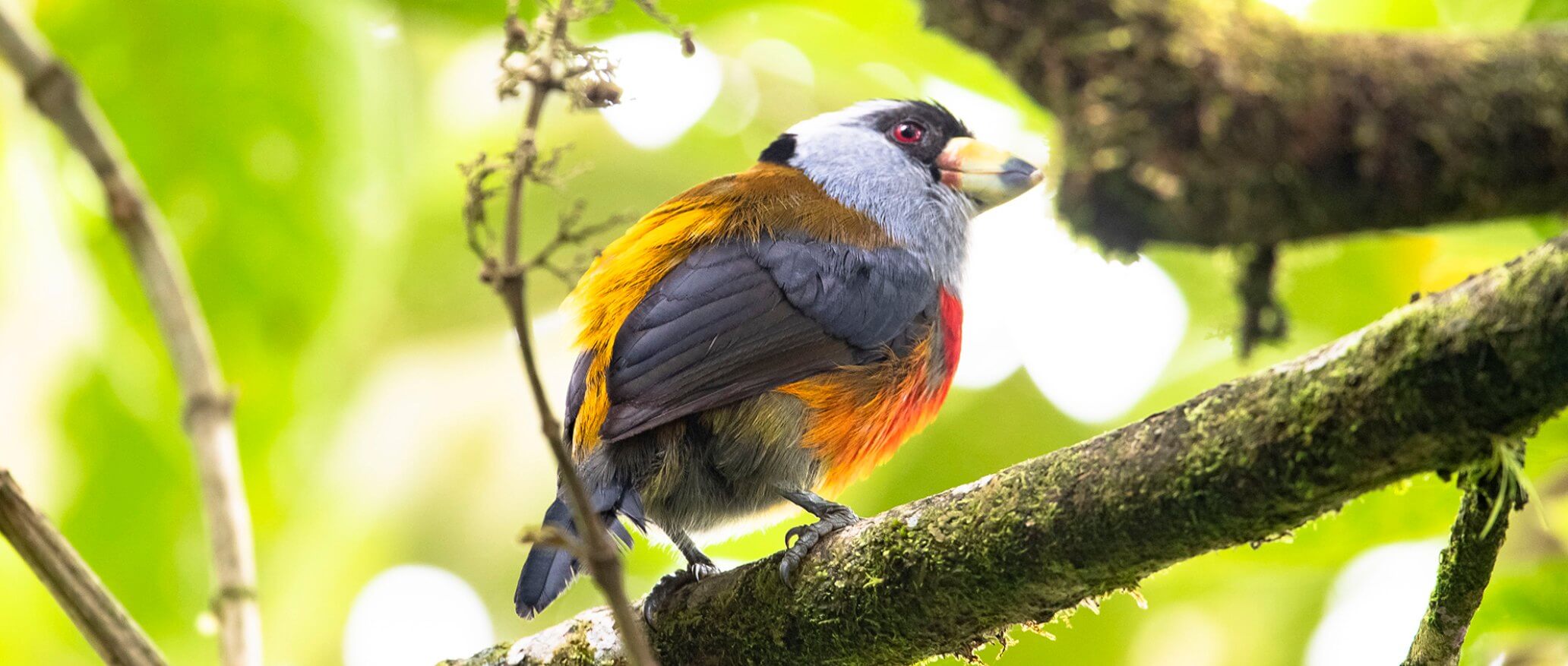
Toucan Barbet
COMPÁS
